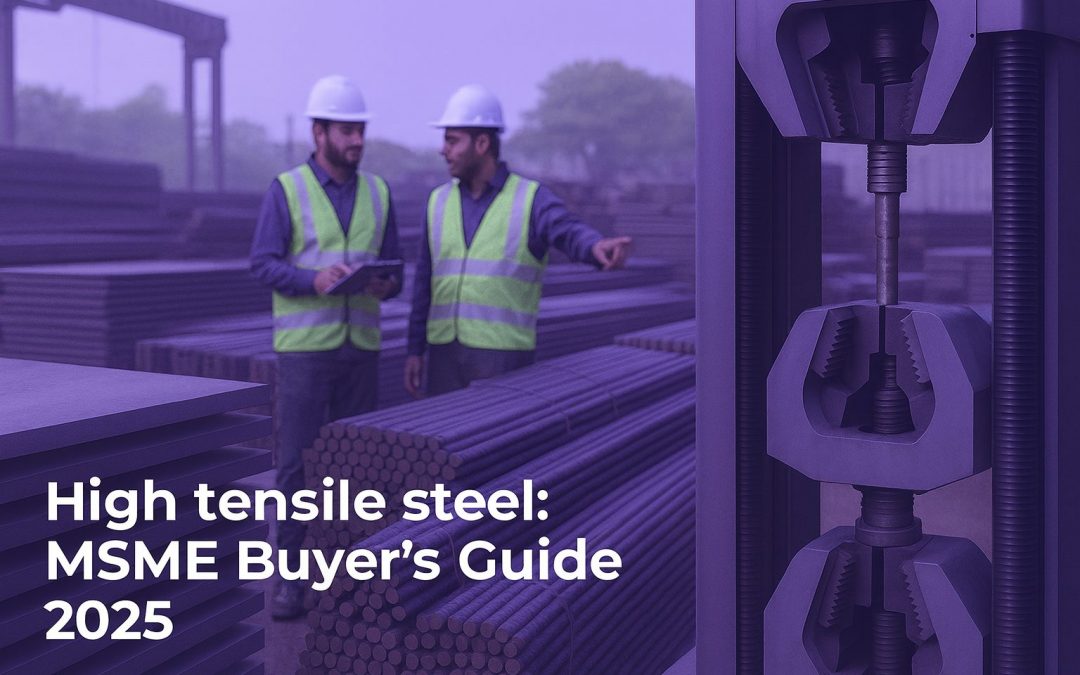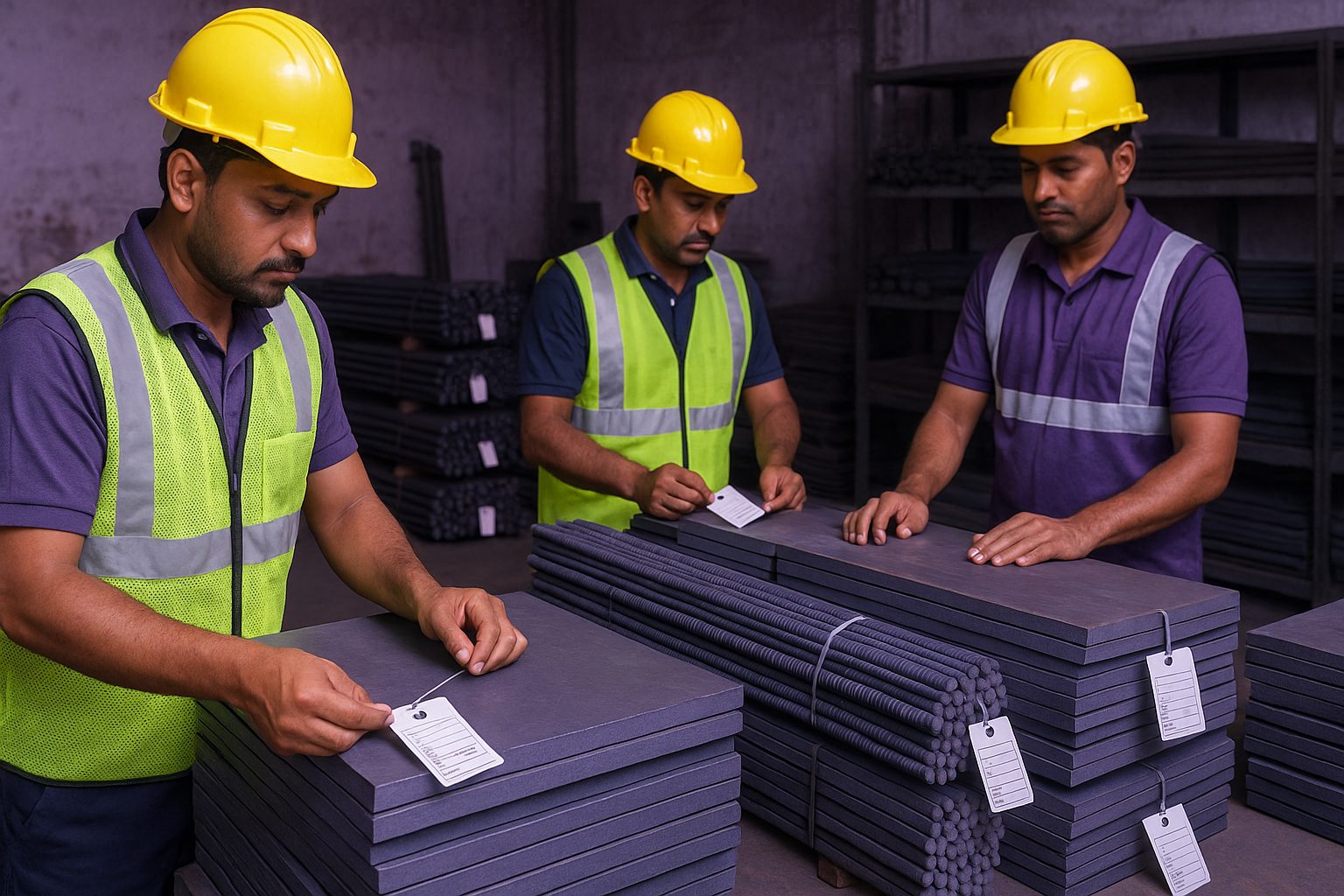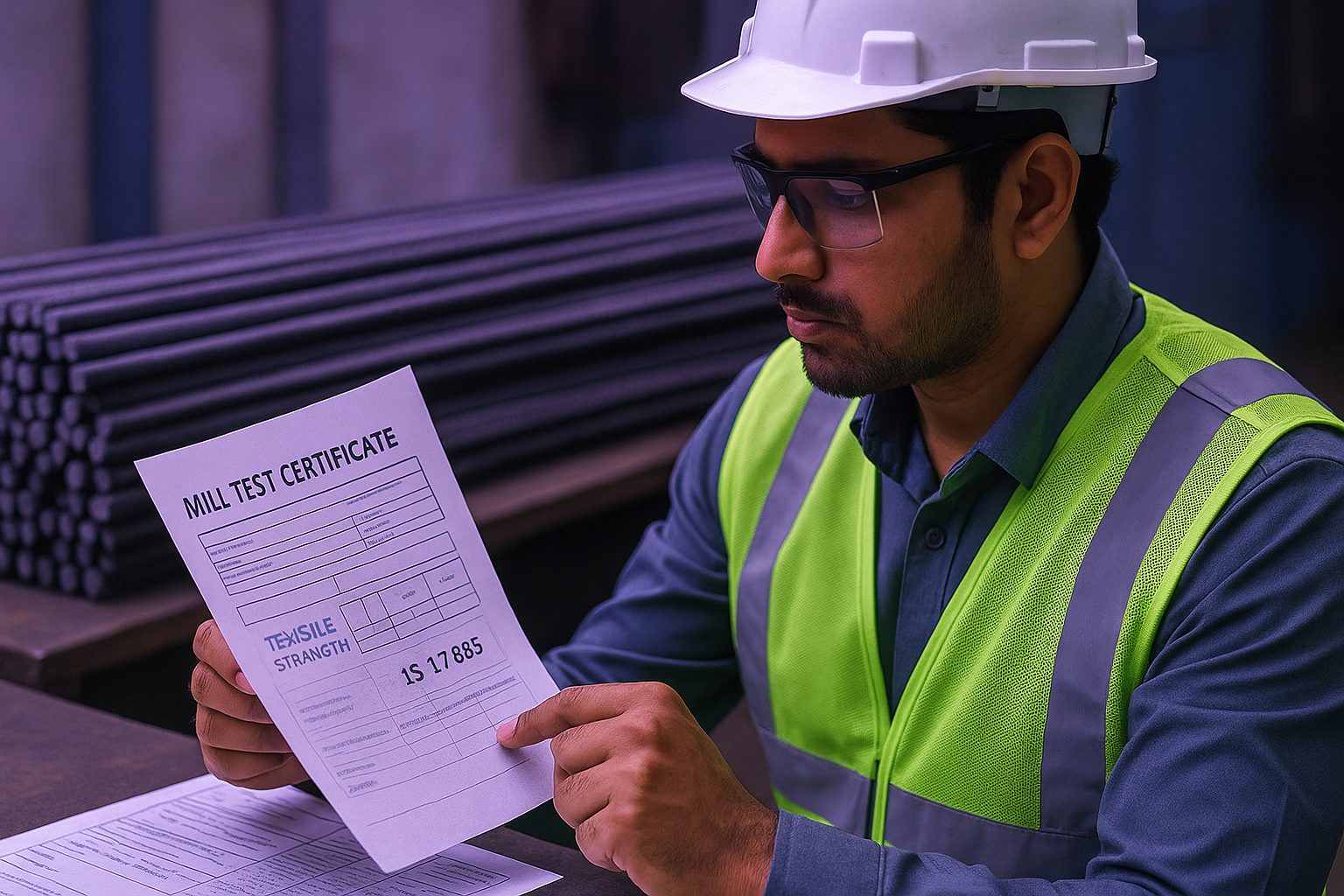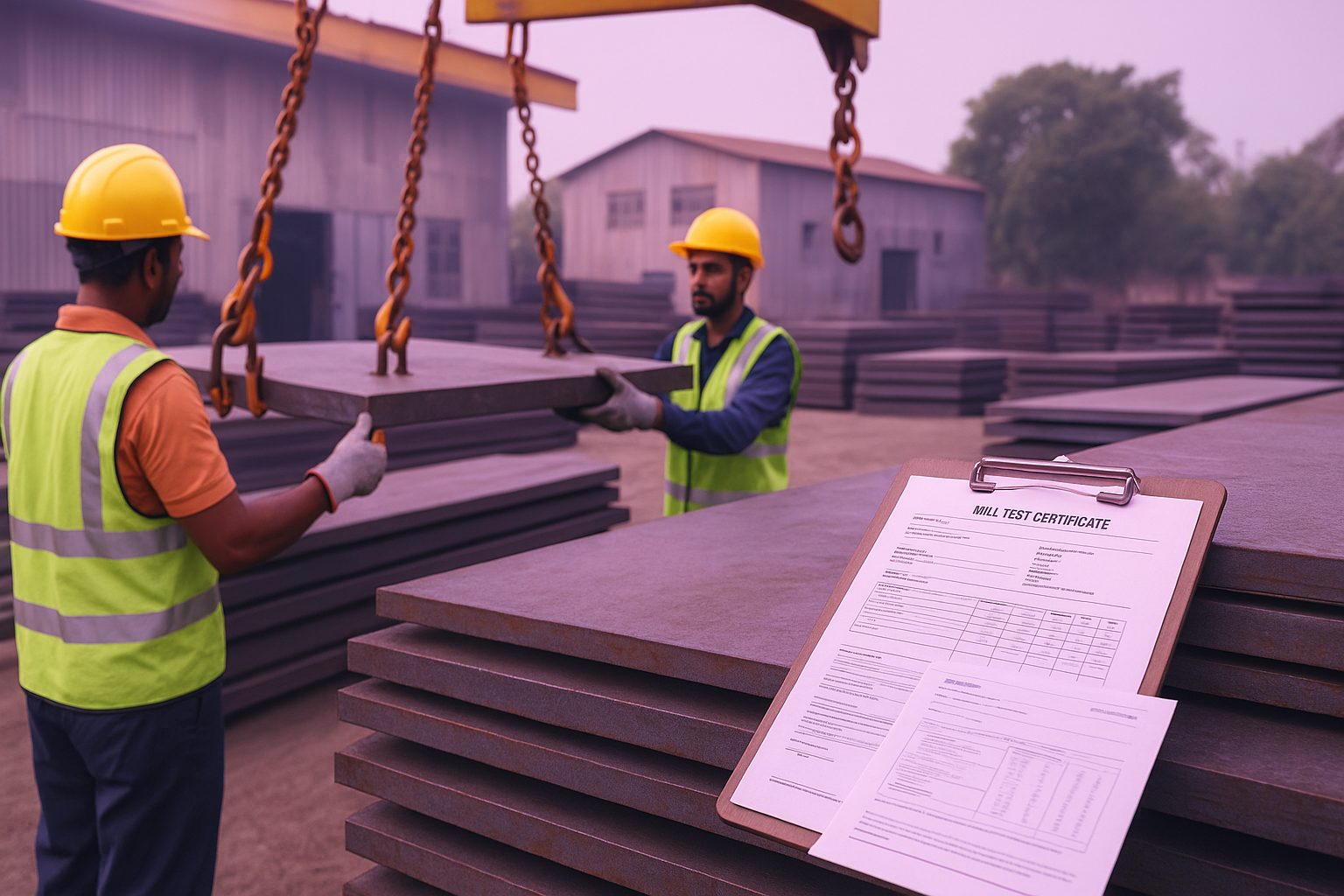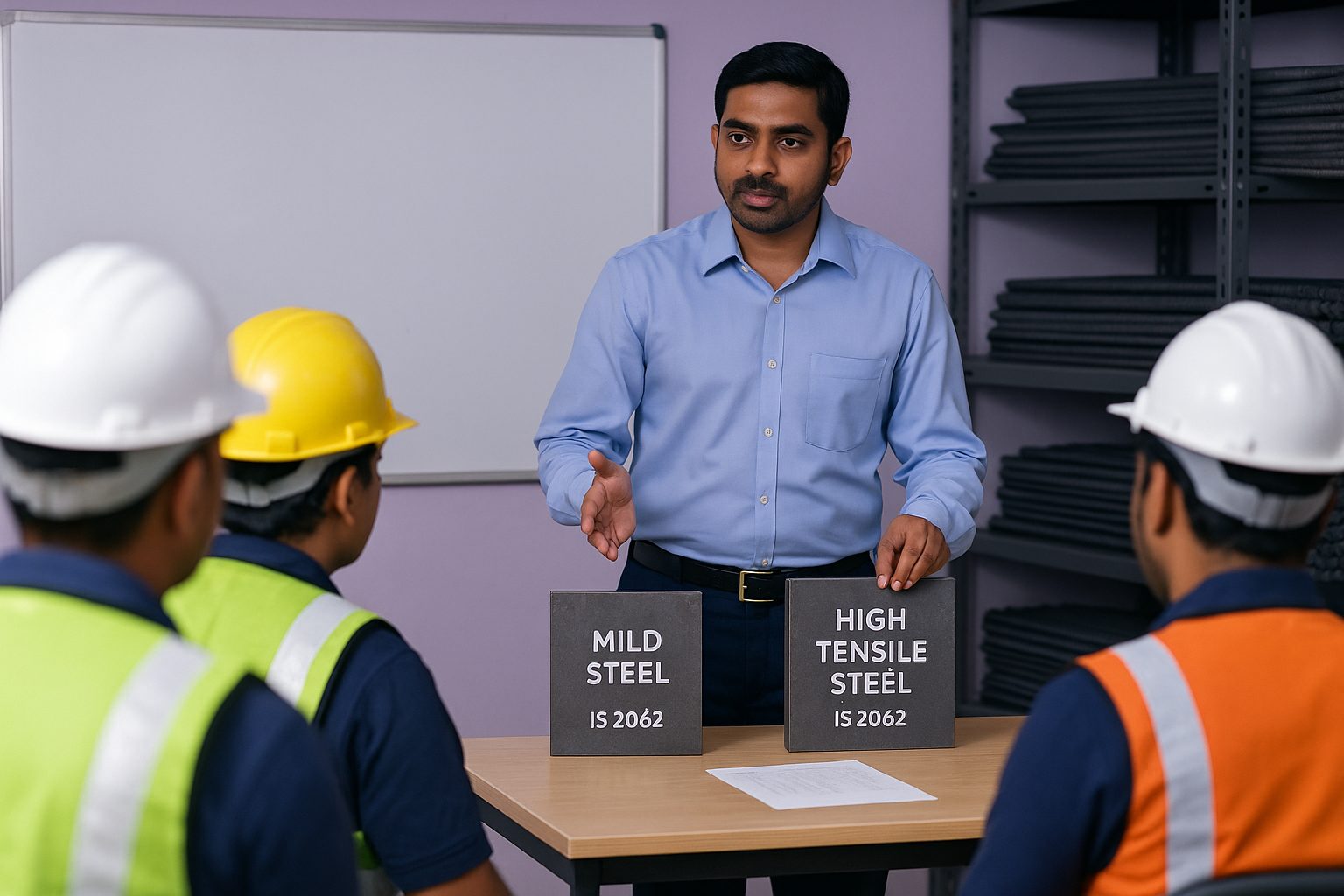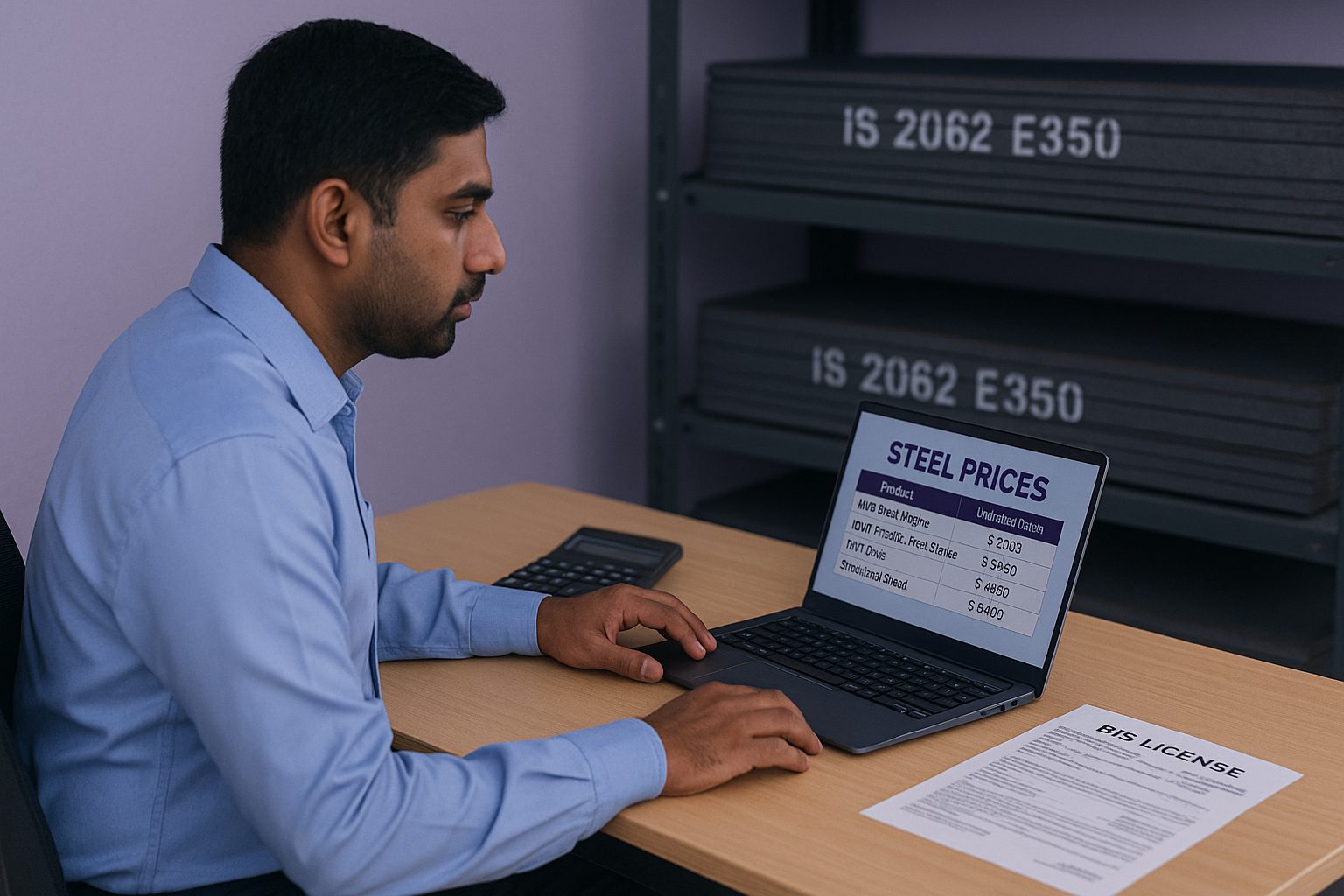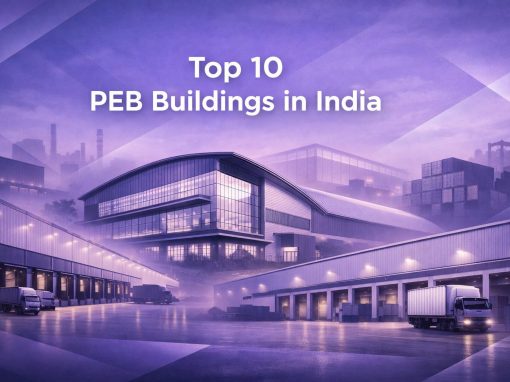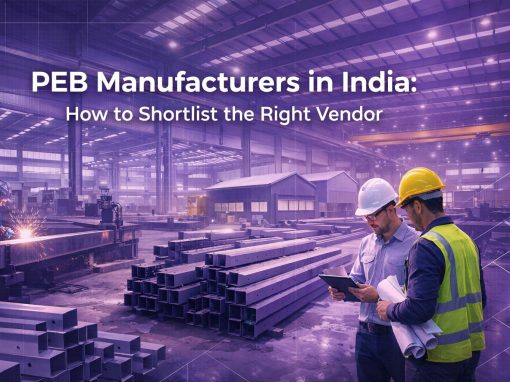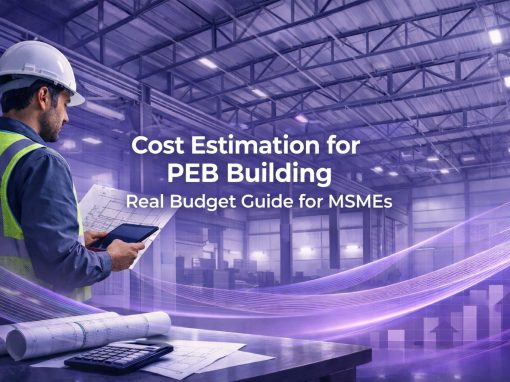Table of Contents
- High tensile steel meaning in real use
- High tensile steel common categories
- Manufacturing process
- Indian Standards and compliance
- Properties and features
- High tensile steel advantages
- Practical applications and MSME buying tips
- High tensile vs mild steel
- High tensile steel plate price 2025
- Conclusion
- FAQs
High tensile steel is one of the preferred steel in a wide range of industries. It has several features that make it a choice for so many industries. However, do you know what high tensile steel is? And how is it made?
This article will take a closer look at the features of high tensile steel, its properties and its applications.
What high tensile steel means in real use
High tensile steel is named after its key feature i.e. high strength and yield strength. Tensile strength refers to the maximum amount of tensile (meaning pulling) stress a material can withstand without breaking. Therefore, high tensile steel is also known as high strength steel or high-performance steel.
It is simply steel that can take more pulling or stretching force before it breaks. In practical terms, it means stronger steel beams in buildings, safer fasteners in machines, and longer life for equipment that works under heavy loads.
Key properties buyers should know
- Tensile strength tells you the maximum load the steel can carry before it breaks.
- Yield strength shows the point where the steel will start to bend and not return to its original shape.
- Elongation measures how much the steel can stretch before it fractures.
These values appear on every Mill Test Certificate. They are not just lab numbers. They decide whether a structure can take sudden shocks, whether a fastener will hold under vibration, and whether a crane beam will last its service life.
High tensile steel common categories
- HSLA (High Strength Low Alloy): most commonly used in automotive frames and light structures because it is strong yet weldable.
- Quenched and tempered plates: processed with heat treatment, used in cranes, defence vehicles, and heavy equipment.
- TMCP plates (Thermo-Mechanically Controlled Process): chosen in shipbuilding and offshore projects for their toughness.
- Pre-stressed bars and certified fasteners (8.8, 10.9 classes): essentially used in bridges, flyovers, and machinery joints where failure is not an option.
How it is produced
High tensile steel is made by carefully adding different elements. It is not one single grade but a group of alloys. These include carbon, manganese, chromium, and nickel to iron. The mix is rolled or forged into shape and then strengthened through heat treatment. In some cases, galvanising or other coatings are applied to improve resistance to corrosion.
MSME relevance
For small manufacturers and fabricators, the real question is not “what is high tensile steel?” but “which type of steel do I need?” Choosing HSLA for a bus body, or IS 1786 rebars for a tender, is what ensures compliance, timely delivery, and payment without dispute.
How to make high tensile steel?
- All raw materials including carbon, chromium, nickel, manganese and molybdenum are combined with iron in a furnace. The exact composition of these materials depends on the grade of steel being produced and the desired features.
- Once the raw materials are well combined, high tensile steel is shaped into desired forms such as bars, rods, sheets, coils, etc. Various kinds of manufacturing techniques are used for shaping such as rolling, forging, etc.
- Once steel takes the desired form, it is heat treated. The heat treatment gives steel strength and hardness and high tensile steel is produced.
- Next, high tensile steel undergoes chemical treatment for corrosion resistance. For example, galvanisation treatment.
Note: The manufacturing process depends on the grade being produced and the expected features. Therefore, the actual process may vary in some cases.
Indian Standards and Compliance to reference
In India, steel is not bought only on the basis of price. Every tender or supply order is tied to an Indian Standard (IS) code. Without it, the material cannot pass inspection or audit. So, it becomes essential for MSMEs to know these codes to avoid any delays and disputes.
IS codes importance for MSMEs
- IS 1786 – TMT bars
Commonly refers to sariya, used for reinforcement in buildings, bridges, and other structures. It defines grades such as Fe 500 or Fe 600 and sets rules for tensile strength, yield strength, and bend tests. - IS 2062 – Structural steel
Covers plates, sections, and flats used in fabrication work. This is the reference for fabricators making towers, sheds, or industrial equipment. - IS 2090 – Pre-stressed concrete bars
Required for bridges, flyovers, and railway sleepers. The government has made BIS certification compulsory for this material under Quality Control Orders. Non-certified bars are not accepted in public projects. - IS 1608 – Tensile testing of metals
Specifies how tensile and yield strength must be tested. Values written on a Mill Test Certificate are valid only if they follow this method.
Why these codes matter
- Tender fit: Orders without an IS code are usually rejected at the scrutiny stage.
- Audit trail: Inspectors always check test certificates against the mentioned code. If an outdated code is quoted, the supply can be blocked.
- Supplier check: When businesses buy from BIS-licensed vendors, risk is automatically reduced. This ensures compliance and protects working capital.
For small businesses, the safest practice is simple: always mention the correct IS code in the RFQ, ask for BIS-certified supply, and keep copies of the licence and test certificate. It is the quickest way to avoid rejections and keep payments moving.
How to read and verify a Mill Test Certificate (MTC)
Every supply of high tensile steel comes with a Mill Test Certificate. And for MSMEs, this document very important just like the delivery note. As it confirms whether the steel delivered matches the order and the standard quoted in the tender.
Things to check on an MTC
- Grade and IS code: The grade (e.g., Fe 500D, E250, or Class 8.8) and the correct Indian Standard must be clearly mentioned.
- Mechanical properties: Look for tensile strength, yield strength, and elongation. These values must meet the limits set by the IS code.
- Chemical composition: The percentage of carbon, manganese, and other alloying elements should fall within the allowed range.
- Heat number and batch: This is the traceability link between the steel piece and the furnace heat it came from. It must match the markings on the steel or packaging.
- Test method reference: Certificates must state that the results follow IS 1608 or the applicable test standard.
Common red flags
- Missing or outdated IS code.
- Units written incorrectly (N/mm² vs MPa).
- No signature, date, or test lab details.
- Heat number on the MTC not matching the number on the material.
Even small errors in an MTC can lead to big problems. This may lead to rejection during inspection of supplies, payments can be blocked, and also vendors risk being disqualified from future tenders. Thus, for small businesses, cross-checking these details at the time of delivery is the simplest way to avoid costly disputes.
Writing RFQs and Tenders the Right Way
In most MSME orders, the real problem is not with the steel but with the way the requirement is written. A vague line such as “supply of high tensile steel” creates confusion. Each vendor interprets it differently. One may offer plates, another rebars, and a third fasteners. The result is delay, mismatch, and sometimes rejection at the site.
What must an RFQ include
- Correct IS code and grade. Always name the standard and the grade, for example IS 2062 E250B plates or IS 1786 Fe 500D rebars.
- Mechanical values. Add the required tensile strength, yield strength, and elongation as defined in the code.
- Inspection rules. State that the material will be checked as per IS 1608 and that the MTC must be submitted with each lot.
- Treatment or coating. If galvanising, painting, or any special protection is needed, mention it.
- Sampling method. Clarify how many samples will be tested, and at what stage.
Example lines buyers use
- “High tensile structural steel plates, IS 2062 E250B, 12 mm thickness, hot rolled. Each batch to be supported with MTC as per IS 1608.”
- “TMT rebars, IS 1786 Fe 500D, bend and rebend tested, sourced only from BIS-licensed mills. Mill Test Certificate compulsory.”
When the RFQ is this clear, suppliers give accurate prices and the buyer receives exactly what was asked for. More importantly, auditors and site inspectors find the documents in order, which means payments are not delayed.
Practical applications and MSME buying tips
Across multiple industries, high tensile steel is used in a wide range of applications . Basically, the areas where strength, durability, and performance are critical.
Here are some common applications:
| Sector / Industry | Typical Applications |
| Construction & Infrastructure | Rebars in high-rise buildings, bridges, industrial facilities, metro projects |
| Fabrication Work | Plates and sections for towers, sheds, and heavy structures |
| Automotive & Machinery | Chassis frames, crane booms, gears, fasteners (Class 8.8, 10.9), earthmoving equipment |
| Energy & Shipping | TMCP plates for offshore platforms, wind turbine towers, ship hulls |
| Railways | Tracks, bridges, and rolling stock components |
| Defence & Heavy Vehicles | Armoured vehicles, military equipment, high-strength fasteners |
What makes this steel valuable is the balance between strength and weight. Lighter sections can carry heavy loads, which cuts down on overall material use. However, its durability refers to fewer breakdowns and lower maintenance over the period of time. And in critical jobs – from a flyover to a crane joint – its higher yield strength provides a margin of safety against sudden failure.
For MSMEs, good buying practice is just as important as the material itself. That said, over-specifying a grade only adds cost and can create welding difficulties. This means, every supply should be backed by proper paperwork, which include BIS licences and Mill Test Certificates.
Also, buyers must watch the finer points: thickness tolerances, delivery terms, and minimum order sizes that can change the final cost significantly. Above all, a dependable supplier with a record of timely deliveries and clean documentation is worth the trust. It helps MSMEs keep projects on schedule and ensures payments are cleared without friction.
Advantages of high tensile steel
- Ability to withstand heavy loads and stresses
- Ability to withstand extreme conditions
- It is lightweight yet strong hence, offers improved safety and performance
- Durable material
- It can withstand extreme temperatures
- Ability to withstand corrosive environment and high pressure
High tensile vs mild steel
Buyers often use the terms high tensile steel and mild steel loosely, but the two are very different in behaviour and in how they are used. Mild steel is essentially low-carbon steel, valued for its ductility and ease of fabrication. Whereas, high tensile steel, is put together with controlled alloys and treatments to deliver higher strength, the areas where performance and safety are critical. For MSMEs, knowing the difference is essential when raising RFQs or responding to tenders, since the wrong choice can raise costs or lead to rejection at inspection.
Comparison of high tensile steel and mild steel
| Property | High tensile steel | Mild steel |
| Tensile strength | Tensile strength is much higher which depends on grade (500–2,000 N/mm²). Suitable for heavy loads and critical jobs. | Tensile strength is comparatively low and varies from 400 to 800 N/mm². Adequate for general fabrication and low-stress uses. |
| Carbon content | Typically, lower carbon with micro-alloying (manganese, chromium, nickel) to achieve strength. | Slightly higher carbon than structural-grade high tensile steels, though still classified as low carbon (up to ~0.25%). |
| Weldability | Can require special procedures or pre-heating with respect to certain grades. | Usually, easier to weld, even with basic equipment. |
| Flexibility | Stronger and harder, less easy to bend or form. | More ductile, easier to cut, bend, and shape. |
| Applications | Bridges, towers, heavy machinery, fasteners, defence vehicles, offshore structures. | General fabrication, pipes, frames, panels, tanks, and basic construction work. |
Pro buying tip: MSMEs must match the chosen grade to the correct IS code in their RFQs. For instance, specify IS 1786 Fe 500D for rebars or IS 2062 E250B for structural plates. As this will avoid ambiguity, ensures suppliers quote accurately, and reduces the risk of tender rejection.
High tensile steel plate price 2025
The most common structural high tensile plates used by MSMEs, including IS 2062 E350/E350 BR, ranges from about ₹52 to ₹75/kg. Though it depends on thickness and city.
For instance, Mumbai listings in August 2025 show IS 2062 E250 at ~₹67,500/MT and IS 2062 E350 at ~₹71,500/MT ex-warehouse, which is about ₹67.5 to ₹71.5/kg.
Apart from it, some recent data show E350 HR plate 20–25 mm at ~₹52–₹53/kg, and retail listings for E350 plate at ₹60–₹90/kg band, which explains the broader range.
For higher-strength or wear/quenched-and-tempered plates used in heavy machinery and defence applications, including Hardox® 400 or S690QL, typical retail quotes run higher. This often ranges from ₹110 to ₹180/kg depending on grade and thickness.
Note: The price of high tensile steel plates in India changes frequently with grade, coil vs plate, thickness, and market conditions. Rates also differ by supplier location and delivery terms. MSMEs should always ask for updated quotes from multiple BIS-approved vendors, compare inclusions such as taxes and transport, and ensure that the quoted grade matches the required IS code in RFQ.
Also read: Mandi Gobindgarh rates today
Conclusion
High tensile steel is nothing but a stronger version of mild steel. For small and medium businesses, ordering high tensile steel is never just a routine purchase. The choice of grade, the IS code mentioned in the RFQ, and the documents that arrive with the supply decide whether a project moves smoothly or gets stuck in inspection. A rebar, a plate, or a fastener may look ordinary, but if the certificate does not match the tender terms, payment can be held back and credibility put at risk.
The lesson for MSMEs is straightforward: Know the standard you need, insist on proper Mill Test Certificates, and buy only from suppliers who hold valid BIS licences. Price will always matter, but reliability and compliance save far more in the long run. Firms that treat these checks as part of their routine procurement practice are the ones that avoid disputes, deliver on time, and build stronger reputations with their clients.
Looking to procure steel?
Tata nexarc helps manufacturers, builders and MSMEs source certified steel products, compare prices, and choose the right grade as per IS codes—with complete traceability and procurement confidence.
FAQs
What IS codes should MSMEs mention when ordering high tensile steel plates?
How can a business verify if a steel supplier holds a valid BIS licence?
Do tenders get rejected if “high tensile steel” is written without grade or IS reference?
Along with high tensile steel supply, what all documents’ vendors must provide?
How often do high tensile steel prices change in the Indian market?
What factors influence the landed cost of high tensile steel for MSMEs?
Should MSMEs always ask for Mill Test Certificates with each lot?
Does over-specifying high tensile steel grades affect project cost?
What procurement checks help MSMEs avoid disputes with steel vendors?
Is QCO compliance important when sourcing high tensile steel for government projects?
Charul is a content marketing professional and seasoned content writer who loves writing on various topics with 3 years of experience. At Tata nexarc, it has been 2 years since she is helping business to understand jargon better and deeper to make strategical decisions. While not writing, she loves listing pop music.
